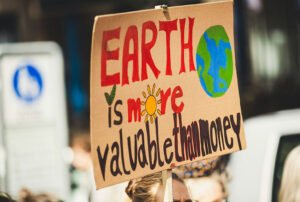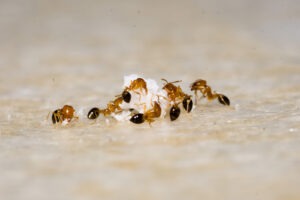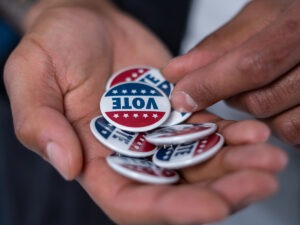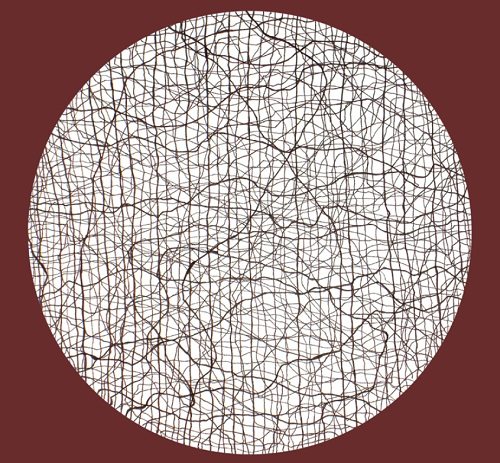
Editors’ note: This article was first published in “Managing Wicked Problems in Agribusiness: The Role of Multi-Stakeholder Engagement in Value Creation, Part Two,” special issue, International Food and Agribusiness Management Review 16A (2013): 23–31.
This essay raises the following broad questions: (1) What role can learning networks play in addressing wicked problems? (2) How can leaders of organizations in the food and agricultural sector facilitate and accelerate the development of such networks? (3) What is the value proposition for existing multi-stakeholder initiatives to participate in learning networks such as GOLDEN?
Networks offer many benefits for tackling wicked problems, in contrast to traditional hierarchal organizational approaches. Perhaps foremost, they can be formed as a “co-owned” space by stakeholders in the system—in this case, the food and agriculture system. This includes agri-businesses and supply chain actors, governments, non-governmental organizations, civil society representatives, and universities. By being “co-owned,” there is an important shift in power relationships and mutual accountability that creates an innovative environment. This environment can act as a “skunk works,” in change agent parlance: a space where the normal rules that support and limit action can be suspended and new ones developed, based on the specific needs of addressing the wicked problem.1 After all, wicked problems are often the result of entanglements of structures, rules, and power relationships.2 Rather than participants simply being accountable to their organizations, these networks create a space for making the organizations accountable for the system’s health—and that involves addressing wicked problems.
One example of this type of network are Global Action Networks (GANs).3 GANs are learning and transformative networks that build the will, organize the necessary competencies and resources, and implement activities to address their particular wicked problem. Examples are: Transparency International and the wicked problem of corruption; the Principles for Responsible Investment and the wicked problem of integrating sustainability concerns into the logic of global finance; and the Sustainable Food Lab.4 A new emerging example is GOLDEN, a global network of academics partnering with business and others to accelerate the transformation of business to sustainable enterprise. It aspires to support development of a food and agriculture “industry” ecosystem strategy.
These GANs are a new type of organization—as different as government is from business and as civil society organizations are from both of those. They are about weaving together new ways that build accountability and action for a system’s health among its stakeholders. The concept of “GANs” has seven definitional characteristics, identified with great concern for parsimony, and “necessary and sufficient” to address wicked problems through their large system-change aspirations. They build on the three characteristics of multi-stakeholder engagements (MSEs):5
- Combination of formal and informal relationships. GANs are inter-organizational networks with three layers of organizing: layer one is the “organization” as nodes with traditional hierarchical staffing; layer two is “partnerships” as a modest number of organizations working on a particular task; and layer three is all of the partnerships that together form the network.
- “Multi-stakeholder.” GANs are defined as “diversity embracing,” a term that emphasizes a proactive stance that includes multi-sectoral (business-government-civil society), multicultural, gender, and other forms of diversity.
- “Community Action Research” programs. A defining quality of GANs involves “entrepreneurial action learners”—that is, people who develop new knowledge and capacity through action.
Other GAN definitional characteristics are: 4) “Multilevel,” that is, local, regional, and global; 5) “Public goods providers,” that is, aiming to create value for society; 6) “Systemic change agents,” that is, working on transformation, reform, and scaling up; and 7) “Voluntary leaders,” that is, participants making commitments to push the boundaries of enhancing environmental, social, and economic outcomes.
MSEs here focus on the organization as the key unit of analysis; the GAN approach instead emphasizes a “systems” perspective. This is liberating in several ways. First, it builds accountability for a system’s health and the public good rather than for that of an organization or even a particular stakeholder group. Second, it greatly enhances the space for experimentation by freeing people from the assumption that “an organization’s interests” are key to a system’s success (the way “organizations” are defined and work is often part of the source of wicked problems). Also notable is that GANs are comprised of organizations that are committed to transformation (rather than incremental change or reform) as described in a GAN’s vision; this includes many large companies, although popular caricatures would suggest otherwise. Finally, the essential element of GANs is process, not structure. Rather than thinking in terms of “permanent” or “formal,” thinking in terms of renewal and emergence is important. Rather than design based on structural theory, focus on the work and how it gets done effectively, and build from there. This is the experimental spirit.
Learning with the Southern Africa Food Lab
The Southern Africa Food Lab (SAFL), created in 2009, can be considered a fledgling regional GAN. Academic research on food security and in-depth interviews with role players from the private, public, and civil society sectors in the South African food system confirmed that transformation was urgently needed to address the interrelated problems of social and environmental sustainability, given persistent hunger and declining resources. There was energy among stakeholders to try a different approach to understanding and addressing the multiple interrelated challenges in the system. Since its inception, the Lab has focused on giving voice to different perspectives on food system challenges, creating “safe spaces” for leaders from different parts of the system to learn together, and working with other organizations to pursue specific innovations in the system. A major focus of current activities is to work with smallholder farmers and agribusiness leaders to better understand the opportunities and challenges of integrating smallholders into the supply chain.
It is clear that the complexity of the food security challenges in southern Africa requires innovative approaches such as those employed by SAFL. However, SAFL has encountered several obstacles in making the case for its systemic, participative, and emergent approach. Its brief experience so far has raised challenging questions about how to ensure the ongoing relevance of the Lab’s activities for stakeholders in the system, not only the business sector but also marginalized producers and consumers. Funding for process-oriented work of this kind presents particular challenges, given the concrete outcomes required in most accountability systems among donor agencies that require concrete deliverables.
Could a collaboration with an initiative like GOLDEN strengthen SAFL’s capacity to learn from its own activities? Can the prototyping and piloting of innovations (e.g., emerging from the current work on smallholders and the supply chain) be designed to provide robust evidence of what works? Based on the findings and experiences from the current case-study work, including learning journeys and public dialogues, one could foresee a set of carefully designed “experiments” being developed with participating firms, large-scale farmers, and smallholders to test different approaches to resolving bottlenecks or exploiting opportunities that have emerged. GOLDEN could also support the development of an ongoing learning system across experiments that would be responsible for ensuring documentation, assessment, and embedded learning practice. It would bring to bear such methodologies as communities of practice, mapping, learning histories, and outcome mapping in a supportive and nonintrusive manner. This activity would support people involved in the interventions who are too busy to also do the learning system development.
At a more general level, the question is whether GOLDEN can serve to bring together leaders from multi-stakeholder initiatives in the agro-food system (such as Ecoagriculture Partners, Seas of Change, and the Bottom of the Pyramid) to systematically learn how to optimize the contribution of such initiatives to the needed transformation in the global food system. GOLDEN could connect all of these in the learning process with the following objectives:
- Speeding learning through broadening comparisons with a similar experimental approach that can produce comparable results;
- Connecting initiatives to realize coherence between them to gain scale with particular companies and address shared issues, broadening the number of sites for experiments, etc.; and
- Sharing and further developing large systems-change strategies and processes that each of the initiatives is otherwise developing independently.
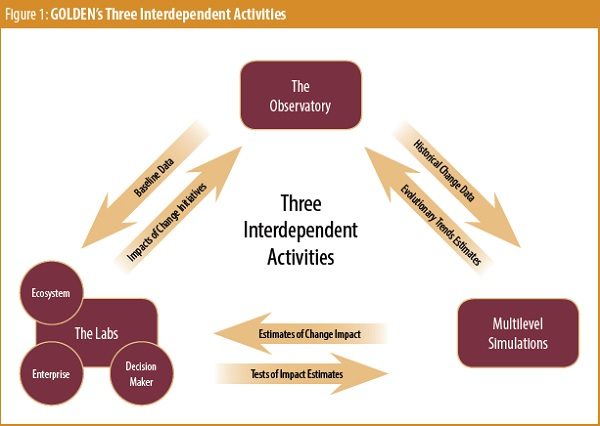
The GOLDEN Invitation to the Ag-Food Community
GOLDEN proposes a platform with specific activities to answer the question, “How can business evolve to a sustainable enterprise?” (See figure 1.) This question reflects core qualities of “wicked problems” identified in International Food and Agribusiness Management Review’s first special issue on the topic, “Managing Wicked Problems in Agribusiness: The Role of Multi-Stakeholder Engagement in Value Creation, Part One” (2012):
- The specifics of the desired solution (sustainable enterprise) are defined through the inquiry rather than known in advance;
- Cause-effect relationships behind un/sustainable enterprise are difficult to define;
- Action is “controversial”;
- Collective action is required among diverse stakeholders; and
- Responses involve complex systems change strategies.
Internal Dimensions
Sign up for our free newsletters
Subscribe to NPQ's newsletters to have our top stories delivered directly to your inbox.
By signing up, you agree to our privacy policy and terms of use, and to receive messages from NPQ and our partners.
GOLDEN is an open, emerging global network of academic researchers partnering with business and other stakeholders. People wishing to participate in GOLDEN have many models, frameworks, and approaches (just as a wicked problem requires). It is an “engaged, big science” initiative. Along with traditional methodologies, its inquiry emphasizes action research/learning/inquiry6 and engaged scholarship7 methodologies. “Big science” is a technical term associated with the life sciences, such as the CERN superconductor and the Human Genome Project. It describes endeavors distinguished by scale in several dimensions: geographic (global), levels of analysis (comprehensive), academic disciplines (multi- and interdisciplinary), time frame (ten to twenty years), human resources (eventually, thousands of individuals), and financial resources (eventually, $100 million-plus). It is formed in the belief that audaciousness is required to respond to the pressing sustainability question.
GOLDEN provides an infrastructure that stewards three types of activities, together forming a mutually supportive and interdependent whole:
- The Observatory is a repository of data about historic action where the unit of analysis is corporate strategic sustainability initiatives.
- The Labs are future-focused activities where the over-arching methodology is “experiments” at the individual systems, organizational systems, and (industry) ecosystems levels.
- A multilevel simulation generator is being developed as a system dynamic model that integrates data from the first two activities to provide guidance for strategy and policy options that can address the complexity associated with sustainability.
GOLDEN’s strategy is to work with current sustainability-oriented initiatives, with the concept that collectively they form an emerging global large-change system around industries such as food-agriculture-nutrition. The work goes beyond traditional learning approaches (predominantly, “best cases”), which usually involve a historic analysis of an activity that is greatly complicated by inadequate documentation and biased after-the-fact reports, all of which are “retrofitted” to core questions behind the best practice case study. Rather, GOLDEN emphasizes experiments, which are generally accepted as the most rigorous scientific method. This is done by reframing an initiative’s activity as learning-and-change experiments within an evolving system of initiatives. This provides the ability to apply different “treatments” (change interventions) at different sites, having a control site, and thus creating an experimental learning system.
GOLDEN combines three microfoundations of dynamic capabilities that are critical to addressing wicked problems. Dynamic capabilities are “the ability to determine whether the . . . [system] . . . is performing the right activities, and then effectuate necessary change.” The “microfoundations” are “elements” (“discrete process/methodologies/structures”) “that undergird clusters of dynamic capabilities.”8
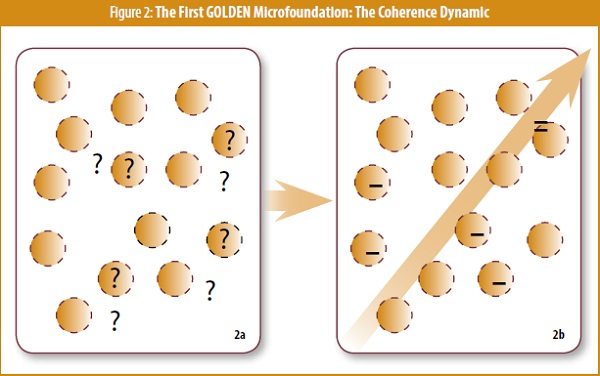
The first microfoundation is the coherence dynamic (see figure 2). SAFL, for example, is one of many initiatives tackling sustainability in the global ag-food system. By collaborating with GOLDEN, it could greatly enhance its impact by more powerfully linking to other similar initiatives and parts of the system to gain scale, create synergies, and speed learning through network transference and reduction of repeating others’ mistakes, reducing non-productive competition in these “pre-competitive collaborative” situations. This is illustrated graphically in figure 2a, where SAFL is, at its current stage of development, one of the circles. Figure 2b, in which SAFL becomes a network of circles, illustrates how this could be different—where there is coherence of effort. SAFL can develop into a fully realized GAN with other ongoing initiatives (other circles in figure 2b) by aligning, reducing conflicts, and improving “fit” between various activities in a particular industry ecosystem or issue domain.9

The second microfoundation is the past learning dynamic, illustrated by the well-known Kolb Learning Cycle.10 Figure 3 provides a well-articulated way to support a disciplined learning process as action takes place. Of course, this cycle applies to a whole initiative, but it also is replicated many times during an initiative in an action research manner to support adjustments to action plans.
The third microfoundation is the future-oriented learning dynamic, illustrated with the U-process figure as developed by C. Otto Scharmer.11 Success depends on keeping participants tipping into the future, always focused on how they can do things differently to address the sustainability imperative. Simply asking, “How are we doing” within the current rules of the game is not enough—we must support envisioning how things can be better with different assumptions and relationships. SAFL has approached this in a sophisticated way, applying the U-process. But doing it once is not enough—it has to be embedded as a core logic. SAFL recognizes this, and its strategy for doing so can helpfully inform others.
• • •
These microfoundations can be supported by a variety of methodologies. For example, social and value network analyses are obvious with the coherence dynamic. Structural changes should be observable if GOLDEN is successful (although the causal relationship is another question). Learning histories are an example of a methodology supportive of the past learning dynamic. And visioning methodologies like scenario development are part of the future-learning microfoundation tool kit.
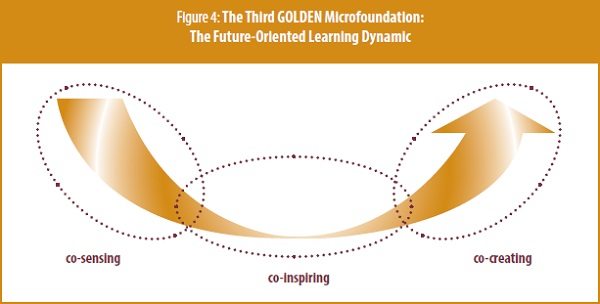
A GOLDEN Food-Agriculture-Nutrition (FAN) Lab is emerging, with people who are both responsive to this vision and interested in participating in its development. Initiatives are welcome to join in. The requirements are simply clarity about what you want to get out of participation, a willingness to help make it happen, and a commitment to developing a sustainable food and agriculture system.
For more information, go to www.goldenforsustainability.org.
Notes
- Michael L. Tushman and Charles A. O’Reilly, “Building Ambidextrous Organizations: Forming Your Own ‘Skunk Works,’” Health Forum Journal 42, no. 2 (1999): 20–23.
- Otto Hospes, Olga van der Valk, and Jennie van der Mheen-Sluijer, “Parallel Development of Five Partnerships to Promote Sustainable Soy in Brazil: Solution or Part of Wicked Problems,” in “Managing Wicked Problems in Agribusiness: The Role of Multi-Stakeholder Engagement in Value Creation, Part One,” special issue, International Food and Agribusiness Management Review 15B (2012): 39–62.
- Pieter Glasbergen, “Global Action Networks: Agents for Collective Action,” Global Environmental Change 20, no. 1 (2010): 130–41; Steve Waddell, Global Action Networks: Creating Our Future Together, Bocconi (University) on Management (Hampshire, UK: Palgrave Macmillan, 2010).
- Hal Hamilton, “Sustainable Food Lab Learning Systems for Inclusive Business Models Worldwide,” in “Managing Wicked Problems in Agribusiness: The Role of Multi-Stakeholder Engagement in Value Creation, Part Two,” special issue, International Food and Agribusiness Management Review 16A (2013): 33–37.
- Domenico Dentoni, Hospes, and R. Brent Ross, “Managing Wicked Problems in Agribusiness: The Role of Multi-Stakeholder Engagements in Value Creation,” editors’ introduction in “Managing Wicked Problems in Agribusiness: The Role of Multi-Stakeholder Engagement in Value Creation, Part One,” special issue, International Food and Agribusiness Management Review 15B (2012): 1–12.
- Reginald W. Revans, The Origins and Growth of Action Learning (Bromley, UK: Chartwell-Bratt, 1982); John Heron and Peter Reason, “The Practice of Cooperative Inquiry: Research ‘with’ rather than ‘on’ People,” in The Action Inquiry Handbook, Hilary Bradbury and Reason, eds. (Newbury Park, CA: SAGE Publications, 2000), 179–88; Reason and Bradbury, eds., The Handbook of Action Research (Thousand Oaks, CA: SAGE Publications, 2001); David Coghlan, “Action Research: Exploring Perspectives on a Philosophy of Practical Knowing,” The Academy of Management Annals 5, no. 1 (2011): 53–87.
- Andrew H. Van de Ven, Engaged Scholarship: A Guide for Organizational and Social Research (New York: Oxford University Press, 2007).
- David J. Teece, “Explicating Dynamic Capabilities: The Nature and Microfoundations of (Sustainable) Enterprise Performance,” Strategic Management Journal 28, no. 13 (2007): 1319–50.
- Eric Trist, “ Referent Organizations and the Development of Inter-Organizational Domains,” Human Relations 36, no. 3 (1983): 269–84.
- David A. Kolb, Experiential Learning: Experience as the Source of Learning and Development (Englewood Cliffs, NJ: Prentice-Hall, 1983).
- C. Otto Scharmer, Theory U: Leading from the Future as It Emerges, 1st ed. (San Francisco: Berrett-Koehler, 2009).


